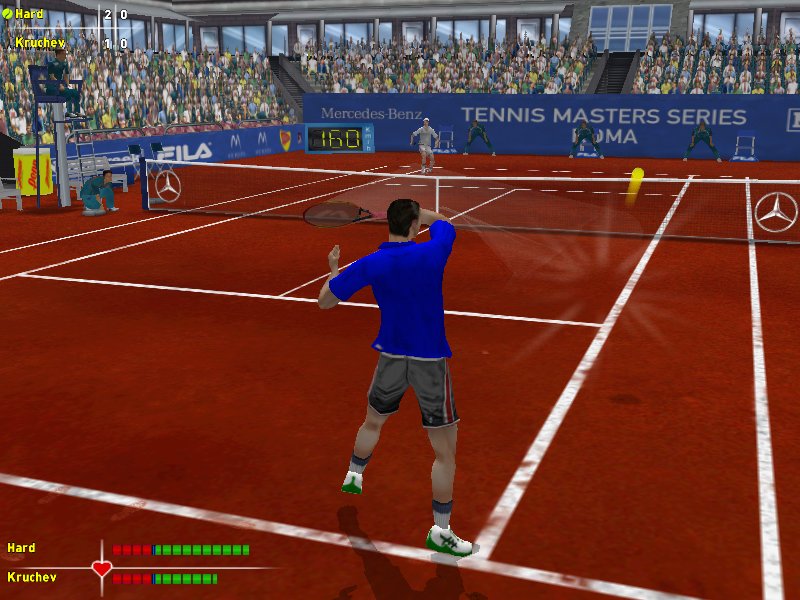
Tennis Masters Series
Written by: Rik
Date posted: November 18, 2007
- Genre: Sport
- Developed by: Microids
- Published by: Microids
- Year released: 2001
- Our score: 6
Tennis games on the PC are a bit like London buses: you wait ages for one, only to find yourself being threatened with a knife once you get onto the top deck. Or, you know, that thing about lots of them then coming along at once. At the start of the decade, fans of the sport had seen little of note since Pete Sampras ’97, which was already beginning to show its age, before a glut of them (well, about three or four) appeared over the next couple of years, capped off by a patchy port of the much-lauded console favourite Virtua Tennis.
While generally acknowledged as one of the premier tennis titles (more on which here), it has to be said that Virtua Tennis isn’t perfect either, especially in the eyes of console snobs suspicious of its arcade roots, gaudy colour scheme and pick-up-and-play nature. With only one button required most of the time and a maximum game length of one set, the suspicion lingered that, though a great game, it represented a simplistic version of the real-life sport, and could be bettered by a tennis title that gave you more shot options, more variables, and more depth.
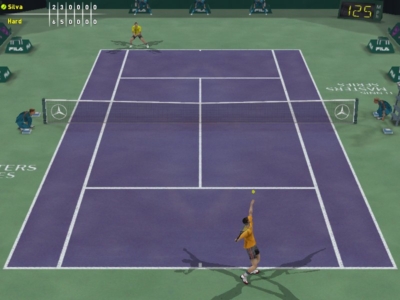
Getting full power on your serve isn’t particularly challenging – just hold the button down as long as possible.
That’s largely the approach taken by Tennis Masters Series, a game briefly championed as the best of its type available for PC before Virtua Tennis (the last time we’ll mention it) made the transition from console. Positioning itself as more of a simulation, it allows (and indeed forces) you to play three and five set matches; there are four buttons controlling the type of shot you want to play; and you enter tournaments featuring over 60 players, all with different skills and attributes.
Early exchanges will have you cursing, even on the easiest of the difficulty settings, as you struggle to keep control of your player and even get the ball back over the net at times. With a bit of patience, you can progress to some fairly reasonable approximations of a game of tennis, and soon you’ll be cranking up the AI settings and getting stuck into some serious matches. The learning curve in the game is well judged, and though you may take a bit of a beating each time you make a step up in difficulty, there’s usually enough encouragement in the progress you make during each match to keep you going.
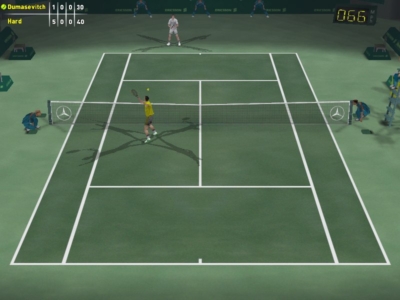
Rushing the net brings some success, although the AI can pull off a pretty decent lob if you’re not careful.
Visually, Tennis Masters Series is solid rather than spectacular. The players are well animated and the courts are all rendered impressively, and there are some nice touches on the clay surfaces, where players’ shoes make marks as the match progresses, and movement is hindered by the more slippery nature of the court. On the negative side, the players move rather tentatively, as if they’ve been suffering from haemorrhoids or pulled up their shorts too quickly during their last toilet break. And though technically the character models look fine, there’s a generic look to all players which makes it difficult to distinguish between many of those on offer.
Part of this is down to the fact that whatever license Microids acquired (and stamped all over the box) doesn’t give them access to names and likenesses of real-life tennis pros, which means that while there may be plenty of different opponents to face off against, none of them are particularly recognisable. There’s nothing particularly distinctive about the way they play either: although the game’s stats screen may describe a player as a ‘power hitter’ or a ‘net rusher’, this seems to have little bearing on the way the player plays in the game, and matches can tend to blend into one another as a result.
There’s also not much in the way of big-match atmosphere. Although the crowd do cheer and react to each point, it all feels slightly removed from the action itself. This is best demonstrated by the encouragement you may receive from the crowd, which takes the form of a single male spectator shouting ‘COME ON!’ just as you’re about to serve. While the crowd may do this at real-life tennis matches, here the general impression is that you’ve got a stalker who obsessively follows you to matches before getting drunk and being forcibly removed from the stadium. There’s also a ‘comedy’ interlude where the umpire asks for quiet when a mobile telephone starts to ring – which is about as funny as it sounds.
It’s a shame that there’s a general lack of involvement, because the game itself is pretty solid, with relatively few glitches. Occasionally you can miss a high ball because the camera doesn’t track it very well, although (bizarrely) your opponents also seem to suffer from this, and they’ll ignore or miss some extremely crap returns when they should really win the point instead. Another criticism is that although you can tell that the various shots at your disposal definitely are different from each other, there’s the suspicion that the three ground strokes (flat, top-spin and slice) are pretty much interchangeable in terms of affecting the outcome of the game. Still, you can have some pretty decent matches, and tight games are accompanied by the requisite bouts of swearing and sweaty palms tightly gripped around the joypad.
There is of course a career mode, which allows you to play through the real-life Tennis Masters Series, and on the highest difficulty setting it certainly takes some time to get through. However, the restrictions of the license mean that no Grand Slam tournaments or female players are included, and the lack of variety on offer is an obstacle to its longevity. Still, Tennis Masters Series is a decent tennis title, and those put off by the prospect of serving against giant beach balls in Virtua Tennis will probably prefer this game’s more measured approach.

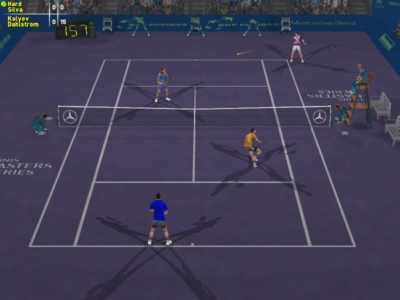
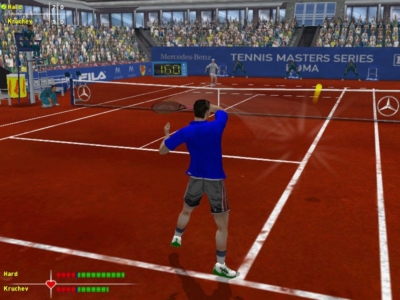

 Posts
Posts